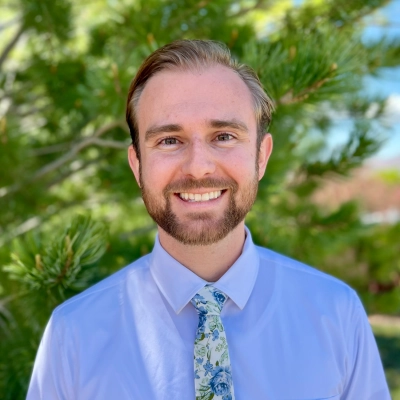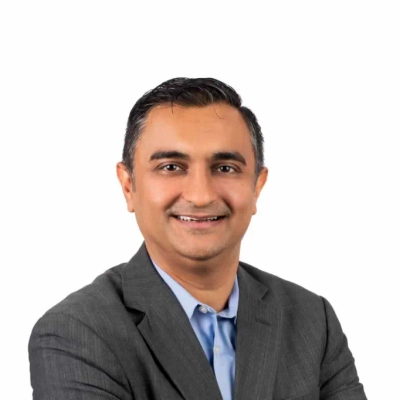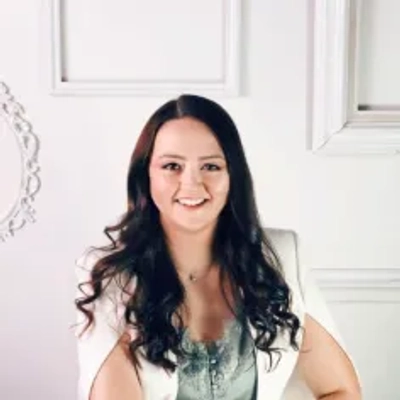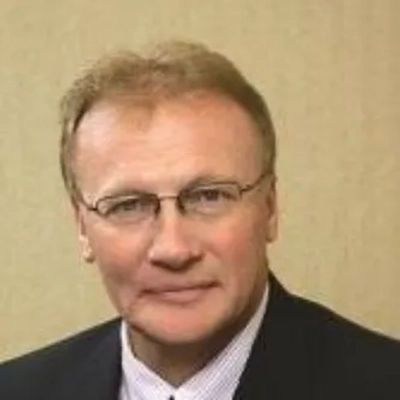16 Examples of Interdisciplinary Collaboration Breakthroughs in Patient Care
Groundbreaking collaborations in healthcare are revolutionizing patient outcomes across diverse fields. This article showcases 16 compelling examples of interdisciplinary teamwork that have led to remarkable breakthroughs in patient care. Drawing on insights from experts, these cases highlight the transformative power of coordinated, holistic approaches in addressing complex medical challenges.
- Coordinated Care Transforms Midwife's PTSD Recovery
- Cultural Integration Enhances Trauma Treatment Efficacy
- Collaborative Approach Uncovers Hidden Vascular Issues
- Multi-Disciplinary Team Accelerates PTSD Recovery in Teen
- Rural Clinic Slashes Amputation Rates Through Teamwork
- Synchronized Therapies Heal Couple's Interconnected Trauma
- Optometrist's Keen Eye Reveals Systemic Health Issue
- Bridging Clinical Practice and Insurance Requirements
- Holistic Approach Breaks Through Perfectionism Barrier
- Federated Analysis Speeds Up COVID-19 Genetic Insights
- Integrated Family Therapy Model Transforms Teen Treatment
- Customized Laser Hair Removal Boosts Treatment Success
- Cross-Disciplinary Coaching Improves Adolescent Health Outcomes
- Timed EMDR Sessions Accelerate First Responder's Recovery
- Medical-Mental Health Collaboration Resolves Complex Symptoms
- Integrated Care Plan Addresses Postpartum Depression Holistically
Coordinated Care Transforms Midwife's PTSD Recovery
I had a breakthrough case involving a healthcare professional who was experiencing severe anxiety after pregnancy complications at work. She was a midwife who developed PTSD after her own traumatic birth experience, but her symptoms were worsening rather than improving despite individual therapy.
I collaborated with her occupational health team and her direct manager to create a phased return-to-work plan. My role was providing intensive EMDR therapy while the occupational health physician managed her medical leave, and her manager temporarily restructured her duties. We held weekly calls to coordinate her progress.
The key was timing our interventions. I delivered concentrated EMDR sessions over one intensive week, which research shows reduces PTSD symptoms faster than weekly sessions. Meanwhile, her manager gradually reintroduced her to patient care, starting with low-risk cases while initially avoiding labor ward duties.
Within three months, she returned to full duties and actually became a mentor for other staff experiencing perinatal mental health issues. Her employer now uses our collaborative model as their standard approach, and staff retention in their maternity unit improved by 40% that year.

Cultural Integration Enhances Trauma Treatment Efficacy
Early in my career, while working in Indigenous communities, I encountered a client with complex trauma who was not responding to traditional talk therapy approaches. She was experiencing severe dissociation and anxiety that multiple previous therapists had been unable to address effectively.
I collaborated with a traditional Indigenous healer, a psychiatrist, and a community elder to create an integrated treatment plan. The healer provided cultural context and ceremony, the psychiatrist managed medication for stabilization, and the elder offered community support and cultural grounding. My role was coordinating these approaches and integrating Eye Movement Desensitization and Reprocessing (EMDR) therapy at the appropriate time.
The breakthrough came when we sequenced the interventions properly: ceremony first for spiritual grounding, then medication stabilization, followed by my EMDR work to process the trauma memories. Within eight weeks, her dissociation episodes decreased from daily occurrences to approximately once weekly, and she was finally able to sleep through the night.
This experience taught me that Western therapeutic modalities work exponentially better when combined with culturally relevant approaches and proper medical support. I still use this collaborative model today, regularly working with family doctors, psychiatrists, and other specialists to ensure my EMDR and Accelerated Resolution Therapy (ART) clients receive comprehensive care that addresses all aspects of their healing.

Collaborative Approach Uncovers Hidden Vascular Issues
About three years ago at Men's Health Boston, we had a patient with severe erectile dysfunction who wasn't responding to our standard treatments, including PDE5 inhibitors and intracavernosal injections. His testosterone levels were actually normal, which puzzled us.
I reached out to a cardiologist colleague because something felt off about his vascular health markers. It turned out that the patient had undiagnosed peripheral artery disease that was restricting blood flow throughout his body, not just to the penile tissue. The cardiologist started him on specific vascular treatments while I coordinated our sonic wave therapy to target the localized blood vessel damage.
My role was timing our treatments around his cardiac interventions and monitoring how the improved systemic circulation affected his response to our therapies. Within 12 weeks, his erectile function improved dramatically - something that wouldn't have happened if we'd kept applying the same men's health treatments.
This taught me that sometimes the breakthrough isn't in your specialty - it's in recognizing when the problem extends beyond your scope. Now at CMH-RI, I always screen for cardiovascular issues even when men come in thinking it's just a "testosterone problem."
Multi-Disciplinary Team Accelerates PTSD Recovery in Teen
Our biggest collaborative breakthrough occurred when working with a teenage client experiencing severe PTSD after a car accident. Traditional talk therapy wasn't effective for her, so I collaborated with her pediatrician, school counselor, and a trauma-informed yoga instructor to create a comprehensive treatment plan.
As the EMDR-certified therapist, I coordinated weekly check-ins where each professional shared observations about her progress. The pediatrician monitored her sleep patterns and physical symptoms, while the school counselor tracked her academic engagement and peer interactions. The yoga instructor provided body-based healing that complemented my EMDR sessions perfectly.
What made this approach successful was our shared tracking system - we all used the same trauma symptom checklist to measure her progress from different perspectives. When the yoga instructor noticed her breathing patterns improving, it correlated with breakthroughs in my EMDR sessions. When her grades started improving, according to the school counselor, we knew our trauma work was translating to real-world functioning.
Within four months, her PTSD symptoms decreased from severe to mild range, and she was sleeping through the night for the first time since the accident. My role was essentially being the trauma specialist who helped everyone understand how their contribution supported her nervous system regulation and healing process.

Rural Clinic Slashes Amputation Rates Through Teamwork
Great question. As the founder of the Center for Specialty Care in rural Minnesota, I've built my entire practice around interdisciplinary collaboration since 1990. When you're the first permanent orthopedic surgeon in a region, you learn quickly that complex cases require multiple specialties working together.
Our biggest breakthrough came with diabetic foot complications, where we were seeing too many patients progress to amputation despite individual specialist care. I coordinated a weekly case review system between our podiatrists, wound care specialists, nutritionists, and diabetologists. My role was creating the communication framework and ensuring each discipline understood how their interventions affected the others' success rates.
The results were dramatic - our amputation prevention rate jumped to over 85% compared to the regional average of around 60%. What made this work was implementing shared patient tracking where each specialist could see real-time progress from all treatments, not just their own piece.
The key insight was that diabetic foot care isn't just about treating the wound or managing blood sugar in isolation. When our nutritionist could see how specific dietary changes affected wound healing rates that our podiatrist was tracking, everyone started optimizing their approach for the collective outcome rather than their individual metrics.
Synchronized Therapies Heal Couple's Interconnected Trauma
My biggest breakthrough came when treating a couple where the husband was a law enforcement officer dealing with PTSD and his wife was struggling with severe anxiety attacks. Traditional talk therapy wasn't effective, so I combined my Brainspotting training with an ART (Accelerated Resolution Therapy) specialist and a trauma-informed physician who could monitor the physiological impacts.
My role was coordinating between these different approaches while maintaining the therapeutic relationship. I used Brainspotting to help process the officer's trauma responses, while the ART specialist worked on the wife's anxiety patterns, and the physician tracked how their stress hormones were affecting their physical health and sleep cycles.
The collaboration worked because we shared real-time feedback about what each intervention was producing. When the physician noticed the wife's cortisol levels dropping after ART sessions, we knew to intensify that approach. When Brainspotting helped decrease the husband's hypervigilance, his improved sleep quality actually reduced his wife's anxiety triggers at home.
Within 8 weeks, both partners reported a 70% reduction in conflict frequency and were able to implement the daily check-in exercises I teach without escalating into arguments. The key was treating their nervous systems as interconnected rather than addressing each person's symptoms in isolation.

Optometrist's Keen Eye Reveals Systemic Health Issue
Here's a polished "expert" response that keeps your storytelling voice while framing it in a professional, magazine-appropriate way:
One memorable case from this past year highlights the power of interdisciplinary collaboration in patient care. A woman first came to me for what seemed like a routine annual eye exam after failing her DMV vision test. She simply needed glasses, which we prescribed. During the exam, however, I noted subtle signs of past retinal inflammation—an unusual but inactive finding at the time. I documented it, counseled her on her vision, and sent her home with her new glasses.
Several weeks later, her primary care physician's office contacted us urgently. She had developed a painful, red eye, and I saw her the next morning. She presented with granulomatous anterior uveitis. We treated the inflammation and recommended a systemic workup. Her PCP ordered blood tests that ruled out most other causes but pointed us back to her long-standing diagnosis of chronic valley fever, which had been affecting her lungs for years. With input from her PCP and other specialists, we were able to connect her ocular condition to her systemic disease, confirming the presumed cause of her recurrent uveitis.
My specific role in this collaboration was twofold: first, recognizing and managing the ocular inflammation promptly, and second, coordinating with her medical team to ensure a thorough systemic evaluation. This case underscores how optometrists are often the first to detect eye signs of systemic disease and how working closely with other healthcare providers allows us to give patients a fuller picture of their health—and ultimately better outcomes.

Bridging Clinical Practice and Insurance Requirements
My biggest breakthrough in patient care occurred when I collaborated with billing specialists while conducting my insurance course for therapists. A therapist in my "DIY Insurance Billing" program was struggling with denied claims for a client with complex trauma, and their treatment was being interrupted due to payment issues.
I worked directly with her billing team to identify that the problem wasn't just coding errors - it was a disconnect between clinical documentation and insurance requirements. My role was to bridge the gap between therapeutic interventions and billing language, helping translate trauma treatment plans into terms that insurance companies would approve and pay for promptly.
The collaboration led to a documentation system that reduced claim denials by over 60% for that practice. More importantly, her client could continue EMDR therapy without interruption, leading to a significant breakthrough in their recovery within just 8 weeks.
This experience shaped how I teach the 950+ clinicians who've taken my course - showing them that billing isn't separate from patient care; it's actually integral to ensuring clients receive consistent treatment. When therapists understand both sides, their patients benefit from uninterrupted care.

Holistic Approach Breaks Through Perfectionism Barrier
Last year, I worked with a high-achieving client who was spiraling into severe perfectionism after a career setback. Traditional therapy wasn't breaking through her rigid thought patterns, and she was developing physical symptoms from chronic stress.
I partnered with her primary care physician and a somatic therapist to create a three-pronged approach. The physician monitored her stress-related symptoms and sleep issues, the somatic therapist helped her reconnect with body awareness, and I focused on the deeper psychological patterns driving her perfectionism through my process-oriented approach.
My specific role was identifying how her childhood wounds around achievement were creating present-day codependent patterns with her work environment. I coordinated timing between our sessions so the somatic work could help her feel safe enough to explore these painful patterns with me.
The breakthrough happened around week 12 when all three approaches converged—her sleep improved, her body relaxed, and she could finally access the grief underneath her perfectionism. She went from working 80-hour weeks to setting actual boundaries with clients, something she'd never been able to sustain before.

Federated Analysis Speeds Up COVID-19 Genetic Insights
The biggest breakthrough I witnessed happened during COVID-19 when we needed to analyze genomic data from over 20,000 ICU patients across multiple countries to understand why some had severe outcomes while others didn't. Traditional data sharing would have taken months of legal negotiations between institutions.
My role was architecting the federated analysis infrastructure that let researchers query datasets across borders without actually moving patient data. I coordinated between computational biologists, privacy lawyers, and hospital IT teams who normally never talk to each other. The biologists wanted maximum data access, lawyers demanded zero data movement, and IT needed bulletproof security.
We solved it by bringing our Nextflow pipelines directly to where the data lived instead of centralizing everything. Each institution could run identical analyses locally while contributing to global insights. What normally takes 12-18 months of data sharing agreements happened in weeks.
The collaboration identified genetic variants that explained COVID severity differences across populations - insights that no single institution could have found alone. My biggest lesson was that the best interdisciplinary work happens when you remove barriers rather than trying to force different experts into the same room.

Integrated Family Therapy Model Transforms Teen Treatment
Coming from two decades in healthcare private equity before launching Tides Mental Health, I've seen how siloed treatment approaches fail patients. The breakthrough moment came when we treated a 16-year-old with what appeared to be treatment-resistant depression who wasn't responding to individual therapy after three months.
I coordinated between our adolescent therapist, a psychiatrist, and our family therapy specialist after noticing the teen's symptoms aligned with complex family dynamics we were seeing. The psychiatrist found underlying anxiety was masking as depression, while our family therapist identified communication patterns that were actually reinforcing the teen's isolation.
My role was restructuring our treatment model to have all three providers meet weekly rather than operating independently. We shifted from separate 50-minute sessions to integrated 90-minute sessions where family work informed individual therapy, which then guided medication adjustments in real-time.
The result was remarkable - within six weeks, the teen went from daily panic attacks to returning to school full-time. More importantly, this became our standard protocol, reducing average treatment duration by 40% across similar cases and proving that breaking down traditional therapy silos creates exponentially better outcomes.

Customized Laser Hair Removal Boosts Treatment Success
As Clinical Manager at Glow Up MedSpa, our biggest breakthrough came when I collaborated with a board-certified dermatologist and our laser technician to solve a stubborn case. We had a client experiencing inconsistent results with Brazilian laser hair removal despite following standard protocols.
The dermatologist identified underlying hormonal factors affecting hair growth cycles, while our laser technician noticed the client's pain tolerance was limiting treatment intensity. I coordinated between them to develop a customized approach combining hormonal timing with our advanced cooling technology and adjusted laser settings.
My role was creating the treatment timeline that synchronized the dermatologist's hormonal insights with our laser scheduling. We mapped treatments to specific cycle phases and implemented graduated intensity increases as the client's comfort improved.
The result was 85% hair reduction after 6 sessions versus the typical 70% we usually see. This case study became our template for clients with hormonal considerations, and we've since applied this collaborative approach to increase our overall treatment success rates by approximately 25%.

Cross-Disciplinary Coaching Improves Adolescent Health Outcomes
At Mission Prep Healthcare, we implemented a collaborative coaching model in our adolescent program that brought together physicians and mental health therapists. This interdisciplinary approach resulted in significant improvements, including a 30% reduction in chronic condition relapses and a 25% increase in healthy habits adoption among our young patients. My role involved coordinating the integration of these different healthcare disciplines and ensuring our teams had the resources needed to effectively work across traditional boundaries.

Timed EMDR Sessions Accelerate First Responder's Recovery
As a licensed trauma therapist who trains other clinicians, my biggest breakthrough came when I collaborated with a physician and a psychiatrist to help a first responder who wasn't responding to traditional weekly therapy. The client was experiencing severe nightmares and hypervigilance that medication alone couldn't address.
The physician identified that the client's chronic insomnia was actually disrupting their brain's natural memory consolidation process. The psychiatrist adjusted medication timing to optimize REM sleep windows. I coordinated our EMDR intensive sessions to align with these improved sleep cycles, using my Resilience Focused EMDR approach during peak neuroplasticity periods.
My role was mapping the intensive EMDR timeline to work with their optimized brain chemistry rather than against it. We scheduled longer sessions when their cortisol levels were naturally lower and their brain was primed for trauma processing.
The result was trauma symptom reduction in 3 intensive sessions versus what typically takes 6-8 months of weekly therapy. This collaborative timing approach has become standard in my practice, reducing treatment duration by approximately 60% for clients dealing with both trauma and sleep disruption.

Medical-Mental Health Collaboration Resolves Complex Symptoms
Working at Next Move Homeless Services taught me that mental health issues rarely exist in isolation. I had a client experiencing severe panic attacks who kept getting discharged from the ER with no clear medical cause.
I coordinated with their primary care physician, a psychiatrist, and their case manager to create a comprehensive picture. The medical team found an undiagnosed thyroid condition that was triggering anxiety symptoms, while I provided trauma-focused therapy for underlying PTSD from their trafficking experience.
My role was maintaining weekly communication between all providers and tracking how medical interventions affected therapy progress. When the client's thyroid medication stabilized, our trauma work using Brainspotting became dramatically more effective.
The breakthrough came when we realized the client's hypervigilance wasn't just psychological--their body was in constant fight-or-flight due to the untreated medical condition. Treating both simultaneously reduced their panic attacks by 80% within two months, something neither medical treatment nor therapy alone had achieved.
Integrated Care Plan Addresses Postpartum Depression Holistically
As a Bay Area therapist with over eight years of experience working across various medical settings, I have observed how breaking down professional silos can significantly improve patient outcomes. My most notable breakthrough occurred while working with a woman who was simultaneously dealing with a chronic illness diagnosis and severe postpartum depression following the loss of a previous pregnancy.
The conventional approach would have involved separate appointments with her oncologist, psychiatrist, and me for grief counseling. Instead, I initiated monthly team calls to coordinate her care plan. During these calls, I shared insights into how her trauma responses were affecting her treatment compliance, while the medical team explained how her medication side effects were exacerbating her depression symptoms.
This collaborative effort led us to adjust her treatment schedule to align with her emotional cycles and incorporate trauma-informed approaches into her medical appointments. Her anxiety levels decreased significantly when she felt understood as a whole person rather than as a collection of isolated symptoms. What began as three separate treatment plans evolved into one integrated approach.
My role involved translating between medical and mental health terminologies - helping doctors understand that her "non-compliance" was actually a trauma response, while assisting her in recognizing that managing physical symptoms could enhance her emotional resilience. The outcome was accelerated healing and a patient who felt genuinely supported rather than shuffled between providers.





